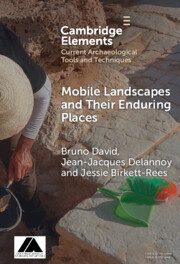Element contents
Mobile Landscapes and Their Enduring Places
Published online by Cambridge University Press: 07 March 2024
Summary
Keywords
Information
- Type
- Element
- Information
- Online ISBN: 9781009181594Publisher: Cambridge University PressPrint publication: 04 April 2024
